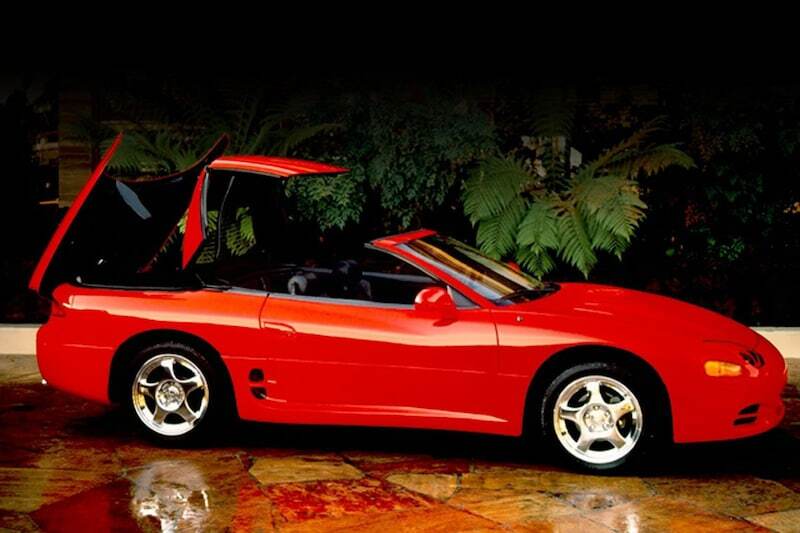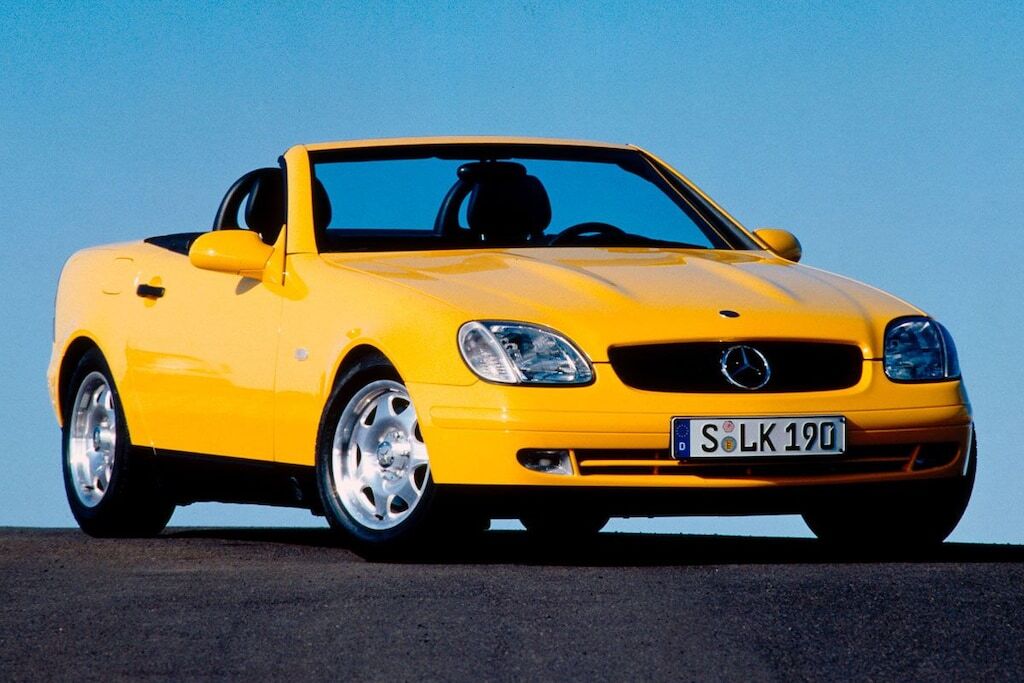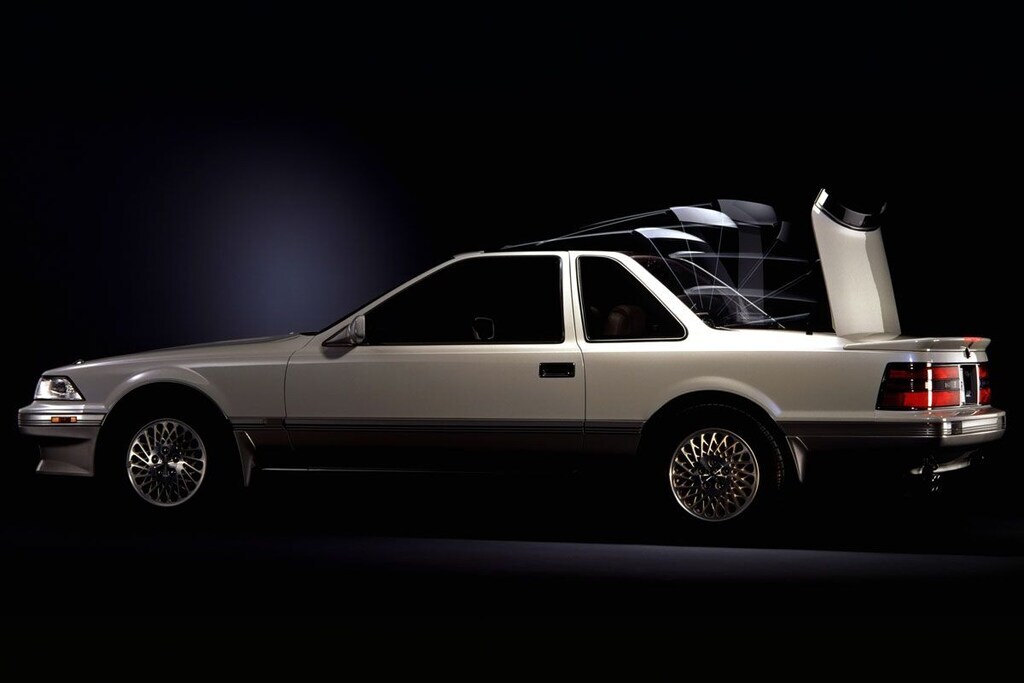
Mitsubishi was eerder

Fascinerend, eigenlijk: ooit hadden alle cabrio’s een stoffen kap, daarna moesten alle cabrio’s ineens een wegklapbare hardtop hebben en inmiddels zijn we weer bijna helemaal terug bij de stoffen kap. De start van de klapdak-hype wordt doorgaans aan de Mercedes-Benz SLK toegewezen, maar dat is niet helemaal terecht.
Dat de wegklapbare hardtop ‘an sich’ een stuk ouder is dan de Mercedes SLK, is redelijk algemeen bekend. Bij Peugeot vond je zo’n dak al in 1934 (al vouwde dat dak zelf niet op) en de Ford Fairlane 500 Skyliner is een beroemd voorbeeld uit de jaren vijftig. We beperken ons vandaag echter doelbewust tot de echte klapdak-hype, en die vond pas rond de laatste eeuwwisseling plaats. Als startpunt voor die enorme reeks klapdak-cabrio’s, die zich uitstrekte van de Nissan Micra tot de Ferrari California. Van iedere compacte hatchback en compacte middenklasser leek op een zeker moment zo’n cabrioversie te bestaan, steevast voorzien van een hard klapdak om de auto extra weerbestendig te maken.

De eerste SLK was in Europa het startschot van een enorme klapdak-hype
Die hype startte in 1996, toen Mercedes de eerste SLK presenteerde. Dat staat buiten kijf, al zorgde Peugeot vanaf 2001 met de 206 pas voor de echt grote aantallen. Wat minder bekend is, is dat de SLK niet de auto was die het harde klapdak herintroduceerde. Dat gebeurde net even iets eerder in de Verenigde Staten en door het Japanse Mitsubishi, dat met de Mitsubishi 3000GT ‘Spyder by ASC’ de eerste moderne auto met een in twee delen openklappend dak uitbracht.
ASC staat voor American Sunroof Company en is bijvoorbeeld ook verantwoordelijk voor de eerste Saab 900 Cabrio, die op zijn beurt als het startschot van de moderne vierzits cabrio kan worden gezien. Echte pioniers dus, daar bij ASC, en dat bewees het bedrijf ook door de ingenieuze dakconstructie van de Mitsubishi. De 3000GT werd rigoureus aangepakt en kreeg een uniek, maar keurig bij het design passend dak dat zich net als bij de latere SLK en al die andere cabrio’s met een druk op de knop onder de naar achteren openende achterklep liet zakken. In totaal zijn er naar verluidt maar zo’n 1.000 Spyders op de markt verschenen, dus de open 3000GT bleef altijd een echte zeldzaamheid. Maar wel een echte trendsetter.
Aerocabin en Varietta

Overigens heeft Japan wel meer klapdak-cabrio’s voortgebracht die in Europa erg onbekend zijn. Zo was er in de jaren 80 al de toyota Soarer Aerocabin. Die had een soortgelijk klapdak, maar liet daarbij de raamstijlen en achterste zijruiten staan en is dus net geen echte cabrio. Later, in 2000, was er ook nog de Nissan Silvia Varietta. Die leek qua constructie, totstandkoming én productiecijfers sterk op de Mitsubishi GTO Spyder. Nissan zocht namelijk net als Mitsubishi een partner voor de ontwikkeling (in dit geval Autech), voorzag de auto van een ‘traditioneel’ tweedelig dak en bouwde er dik 1.000 exemplaren van.
Mitsubishi was earlier

Fascinating, actually: once all convertibles had a fabric top, then all convertibles suddenly had to have a retractable hardtop, and now we are almost completely back to the fabric top. The start of the folding roof hype is usually attributed to the Mercedes-Benz SLK, but that is not entirely correct.
The fact that the retractable hardtop ‘per se’ is a lot older than the Mercedes SLK is fairly well known. At Peugeot you could find such a roof as early as 1934 (although that roof did not fold itself) and the Ford Fairlane 500 Skyliner is a famous example from the 1950s. Today, however, we deliberately limit ourselves to the real folding roof hype, which only took place around the turn of the century. As a starting point for that huge series of folding roof convertibles, which stretched from the Nissan Micra to the Ferrari California. Every compact hatchback and compact mid-range car seemed to have such a convertible version at a certain point, invariably equipped with a hard folding roof to make the car extra weatherproof.

The first SLK in Europe was the starting shot of a huge folding roof hype
That hype started in 1996, when Mercedes presented the first SLK. That is beyond dispute, although Peugeot only provided the really large numbers from 2001 with the 206. What is less well known is that the SLK was not the car that reintroduced the hard folding roof. That happened just a little earlier in the United States and by the Japanese Mitsubishi, which with the Mitsubishi 3000GT ‘Spyder by ASC’ released the first modern car with a two-part folding roof.
ASC stands for American Sunroof Company and is, for example, also responsible for the first Saab 900 Cabrio, which in turn can be seen as the starting shot of the modern four-seater convertible. Real pioneers, then, there at ASC, and the company also proved this with the ingenious roof construction of the Mitsubishi. The 3000GT was rigorously tackled and given a unique roof that neatly matched the design, which, just like with the later SLK and all those other convertibles, could be lowered under the rear door that opened backwards at the touch of a button. In total, reportedly only about 1,000 Spyders appeared on the market, so the open 3000GT always remained a real rarity. But a real trendsetter.
Aerocabin and Varietta

Incidentally, Japan has produced more folding roof convertibles that are very unknown in Europe. For example, in the 80s there was the Toyota Soarer Aerocabin. That had a similar folding roof, but left the window styles and rear side windows and is therefore not quite a real convertible. Later, in 2000, there was also the Nissan Silvia Varietta. In terms of construction, creation and production figures, it was very similar to the Mitsubishi GTO Spyder. Just like Mitsubishi, Nissan was looking for a partner for the development (in this case Autech), provided the car with a ‘traditional’ two-part roof and built more than 1,000 of them.